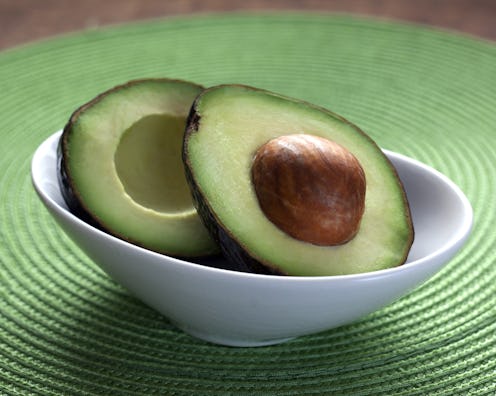Life
How Do Expiration Dates Work, Anyway?

One hideous downside of a living in a consumer-driven, capitalist society is... waste. Specifically, food waste. But could ignoring the "best before" messages on food packages help combat this issue? I've often wondered how expiration dates work, because sometimes, the information on the package seems to contradict the state of the food within it. I've often sniffed many a carton of milk with a growing look of perplexity on my face as I realize it's still good to for my coffee, despite the warning on the front telling me otherwise.
With this in mind, I welcomed the new video from the American Chemical Society's Reactions series which helps shed some light on which foods are safe to eat after the dates on the packets are up — and which aren’t. According to the ACS, "best before" dates are actually meant to define whether food is at "peak quality," not whether or not it's safe to consume — so these messages don't necessarily need to be used to determine whether or not we throw food out. Did anyone else just learn something completely new?
A 2013 report suggested that confusing messages on food packets and containers are to blame for the United States' food waste problem. Millions of people misinterpret what these warnings on the front of food packets actually mean, causing them to throw good produce out unnecessarily. So it's probably about high time we all got a little "best before" education, am I right? The ACS video contains some helpful info on what foods are OK to eat after they've gone a little funky looking, as well as offering tips on what never to eat; they also spotlight the helpful FoodKeeper app, which can offer some more education on when food is good or not.
Here's a breakdown of what we all should know from the video, but be sure to watch the whole thing, too.
Expiration Dates Are Just Suggestions
Manufacturers create these messages to help consumers decide when food is at peak quality, not to state when the food is unsafe to eat. Kind of changes how you think of the whole thing, doesn't it?
These Dates Have Nothing To Do With Food Poisoning
Unless they are on deli meats, infant formula, eggs, and a few others types of items. It's true that there are different kinds of messages you might find on your food packages; according to the USDA, a "sell by" date, a "best if used by" date, and a "use by" date are all different things: The first is a recommendation for how long a store should display an item for sale; the second is a recommendation for consumers for the best flavor or quality; and the third is a recommendation from the manufacturer about when the product is at peak quality. But none of them have to do with safety.
Remember That Fruit And Veg Gets Sweeter As They Get Riper — Not Poisonous
When food gets ripe, enzymes convert some of the plant skin into sugar (fructose or glucose, usually). But soft, ripe fruit is usually OK to eat; it just might taste a little different than a less ripe fruit, due to the fact that more of it has been broken down into sugars.
What's more, brown fruits and vegetables can still be eaten; they've just turned brown because they've oxidized. An avocado that's brown from oxidization might not taste quite as good as a green one, but it's still OK to eat.
Moldy Food Is Always A No-Go, Though
Certain types of mold should never be ingested. Cheese is an A-OK mold (and it's delicious!) — but if you find new mold growing on fruit, leftover food, or bread, throw the whole lot away — not just one slice or piece.
Eating moldy food is like eating athlete's foot, by the way; the same toxins that are found in that nasty foot fungi are also found in mold. They're called mycotoxins, and they are no good. They can cause serious illness.
Bad Milk Should Also Be Avoided
Bacteria in milk feeds on the sugar and produces lactic acid as a byproduct. This is why milk tastes sour. And although these bacteria are mainly harmless, you still shouldn't drink stinky milk.
Want a little more info? Happy to oblige: These foods are fine to eat after their expiration date, while these foods aren't. Obviously those aren't exhaustive lists, but they're a good place to start. For more about food safety, check out the USDA's food safety fact sheets.
Images: Kjokkenutstyr/Pixabay; Reactions/YouTube (6)